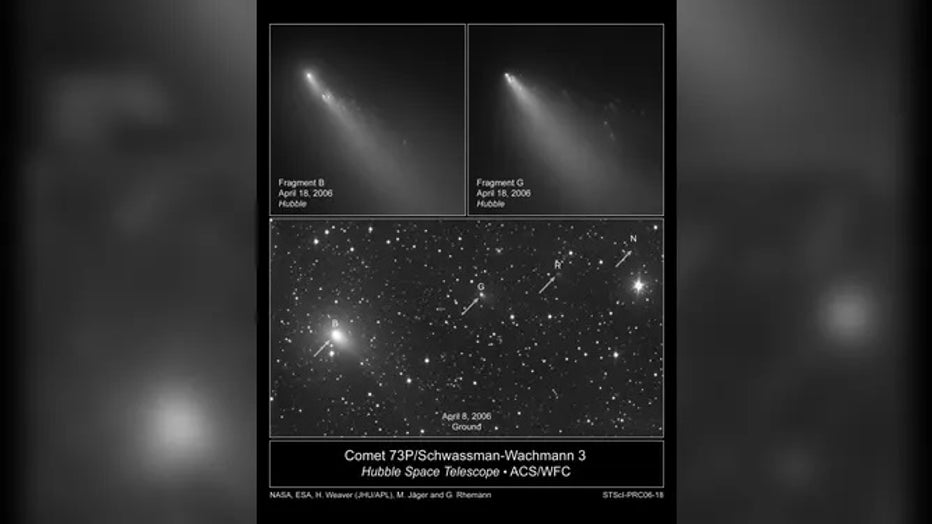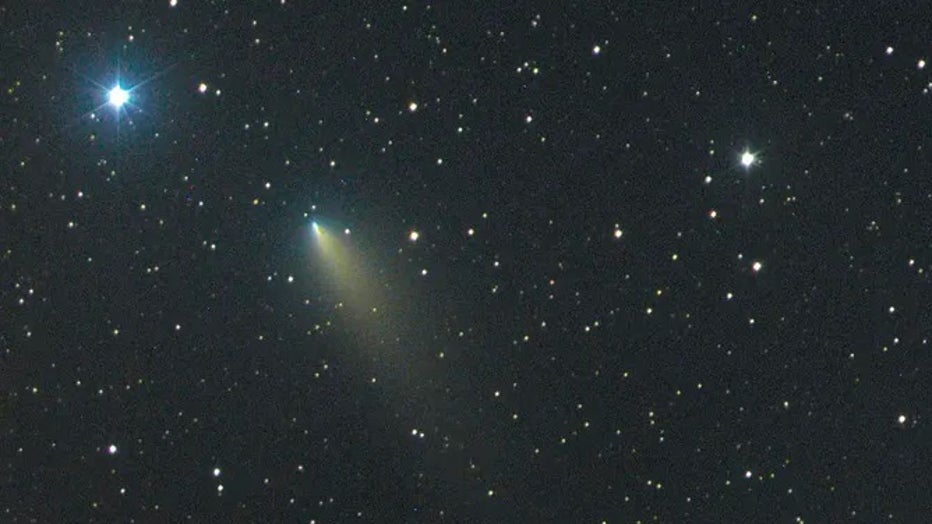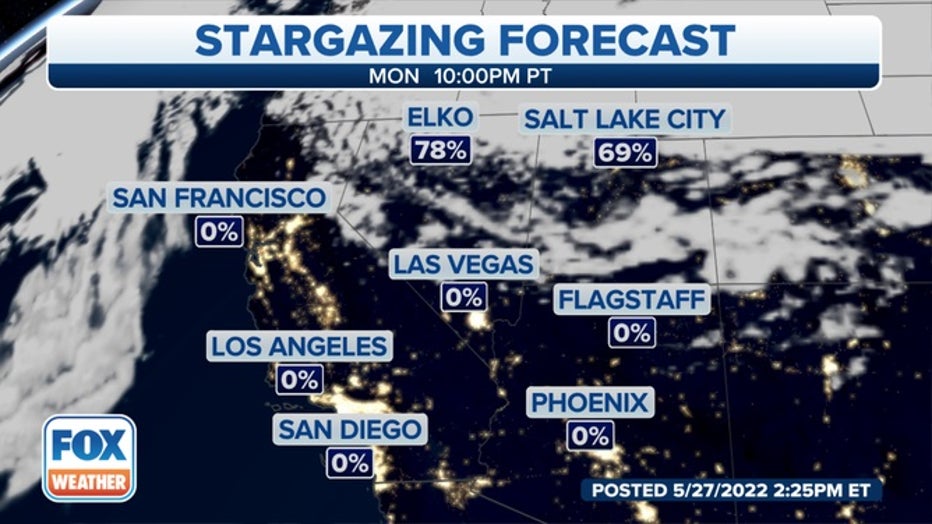Shattered comet adds layer of mystery to Monday night’s meteor shower
SANFORD, Fla. - A comet that broke apart 27 years ago is adding some intrigue to what is usually a rather modest meteor shower this year, with potential for a spectacular display of shooting stars Monday night.
Or, astronomers said, it could totally wash out leaving relatively blank skies for eager meteor shower gazers.
The meteor shower is courtesy of Comet 73P/Schwassmann-Wachmann 3 – also abbreviated SW3. The comet was discovered in 1930 and had since made routine mundane trips around the sun every 5.4 years as a faint comet and the source of the annual but tepid Tau-Herculids meteor shower in late May.
WHO WAS JAMES WEBB? THE NAMESAKE BEHIND THE SPACE TELESCOPE
That is, until 1995 when suddenly the comet became considerably brighter. Astronomers realized the comet had broken apart.

Hubble Images (top): NASA, ESA, H. Weaver (JHU/APL), M. Mutchler and Z. Levay (STScI); Ground-Based Image (bottom): G. Rhemann and M. Jager (NASA / ESA)
Fast-forward to 2022 and astronomers said for the first time, the Earth’s orbit looks like it will interact with some of the comet’s larger leftover debris.
THESE PHOTOS OF THE SUN WILL PUT YOUR 4K TV TO SHAME
"The possible encounter with debris from this comet is different in that most meteor showers are created from very fine grain size particles," Derek Demeter, the director of the Emil Buehler Planetarium at Seminole State College of Florida told FOX Weather. "The debris from this comet is much larger, ranging to the size of small pebble sized dust and ice which can increase the chance of seeing some very bright meteors."

Ground-based color composite image of Comet 73P/Schwassmann-Wachmann 3 fragments B and G on April 21, 2006 made with a 8" f/1.5 Schmidt Camera. (M. Jäger and G. Rhemann via NASA / Space Telescope Science Institute)
Stud or dud?
But astronomers are still unsure how much of that debris will reach Earth’s atmosphere.
"The particles are very hard to see, and we are not entirely sure how displaced the (cometary) debris is," Demeter said. "It could be clumped together or spread out so much we only encounter a few. If the first case happens, then we have a chance of having a stud instead of a dud."
If we get the "stud" show, it will be fortuitous timing. The peak of the meteor shower will be late Monday night into the pre-dawn Tuesday morning hours. The moon will be new, so sky gazers won’t have to worry about moonlight washing out the sky.

Forecasted cloud cover for midnight CT on May 31 during the Tau-Herculid Meteor Shower.
HOW ASTRONOMERS KNEW EXACTLY WHERE A SMALL ASTEROID WOULD IMPACT EARTH
The best advice is to find a place away from city lights and light pollution, and then just look up.
"The radiant or point where the meteors will be emanating from is located near the constellation Boötes which can be seen in the ENE part of the sky in the early evening, moving to the top of the sky around midnight, and finally moving to the WNW in the early morning," Demeter said.
West Coast could get the best show
Bonus viewing points to those along the West Coast who will be in the perfect location in Earth’s orbit for when and where our planet is expected to encounter the heart of the cometary debris.
URANUS WAS DISCOVERED 241 YEARS AGO. GET TO KNOW THE 7TH PLANET FROM THE SUN
"Astronomers think that the Pacific region of the USA may have the best view because the largest extent of the debris will encounter the Earth at night in that location," Demeter said.
The forecast is favorable for much of the region with crystal clear skies expected across much of California and the Desert Southwest.

Forecasted cloud cover for 10 p.m. PT on May 31 during the Tau-Herculid Meteor Shower. (FOX Weather)
Demeter warns again with this meteor shower relying on a new source of material, astronomers do not have a lot of good information on which to base their predictions.
WHY SPACE TRASH WILL CONTINUE TO BE A PROBLEM IN LOW-EARTH ORBIT
"Anywhere may get the best view if it happens so if it is clear, go outside and enjoy the sky," he says. "Even if it is a dud, the moon will not be a problem for the night, so this is a great time to observe the sky anyway. Can't lose if you have a nice clear sky."

